Alienware m17 R4 Review
A stylish and monstrously powerful gaming laptop
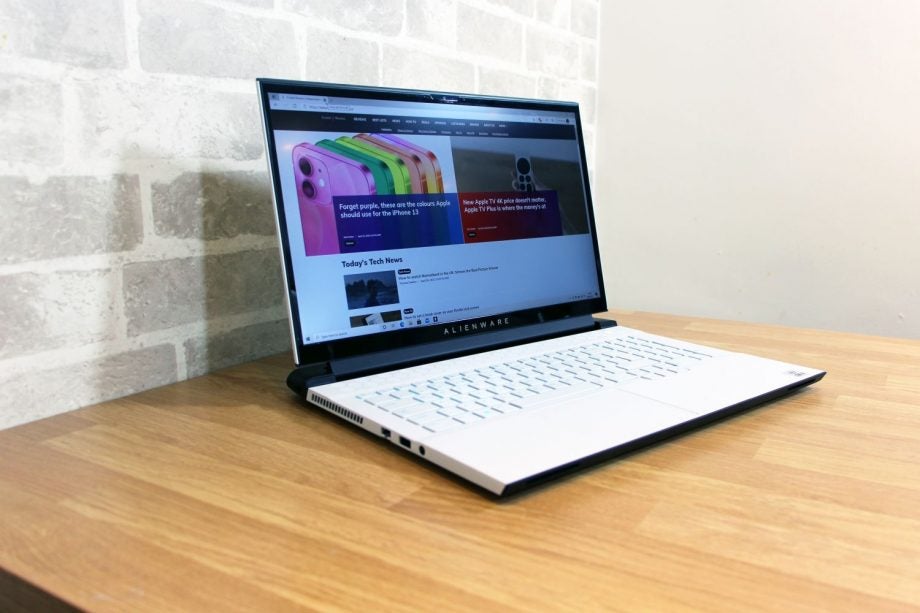

Verdict
The Alienware m17 R4 offers brilliant gaming power, a great screen, impressive connectivity and a top-notch keyboard – but it isn’t perfect. The CPU is beaten by rivals, this machine is heavy, and battery life is poor. It’s an excellent big gaming laptop – but it isn’t infallible, and neither is it cheap.
Pros
- Brilliant gaming power
- A fantastic 360Hz display
- Impressive design and connectivity
- A versatile, high-quality keyboard
Cons
- AMD processors are faster
- No real battery life
- Very expensive
Availability
- UKRRP: £3499
- USARRP: $2999
- EuropeRRP: €3799
Key Features
- Screen17-inch 1920×1080, 360Hz
- CPU:Intel Core i9-10980HK
- GPU:Nvidia RTX 3080
- SSD: 1TB
- Dimensions:400 x 294 x 22 mm
- Weight:2.5 kg
The Alienware m17 R4 has the most demanding gamers in its sights, providing a high-end, big-screen experience.
On the outside, however, little has changed since the previous iteration; it’s on the inside that serious upgrades abound.
Price and release date
The model of Alienware m17 R4 reviewed here costs £3499 / $2999 / €3799, and it’s one of the pricier versions of this machine. Remarkably, though, it isn’t the most expensive; that would be the m17 model with a 4K, Adobe RGB screen and 4TB of storage, which comes in at £4549 / $4309 / €4899.
Even the entry-level Alienware laptops are pricey. For example, a model that includes the RTX 3060 and a 144Hz display still costs £2149 / $1699. The two options with the RTX 3070 cost £2399 / £2599 / €2549 or $2149 / $2349 / €2899, depending on the display, and you can also spend £2899 / $2599 / €3149 to combine the RTX 3080 with the 144Hz screen. The Alienware also comes with a broad range of customisation options.
Design and keyboard
- A good-looking, robust design that’s heavier and thicker than rivals
- Impressive internal and external connectivity
- A robust keyboard alongside a new mechanical upgrade
The latest Alienware is available in Dark Side of the Moon and Lunar Light colour schemes – think black and white – with the review here focusing on the latter. It looks fantastic, with hexagonal vents and lots of RGB LEDs.
The Alienware is robust, but there’s still a little give around the keyboard and base. That’s a tad disappointing at this price, and we hope it’s something that will be addressed in the future.
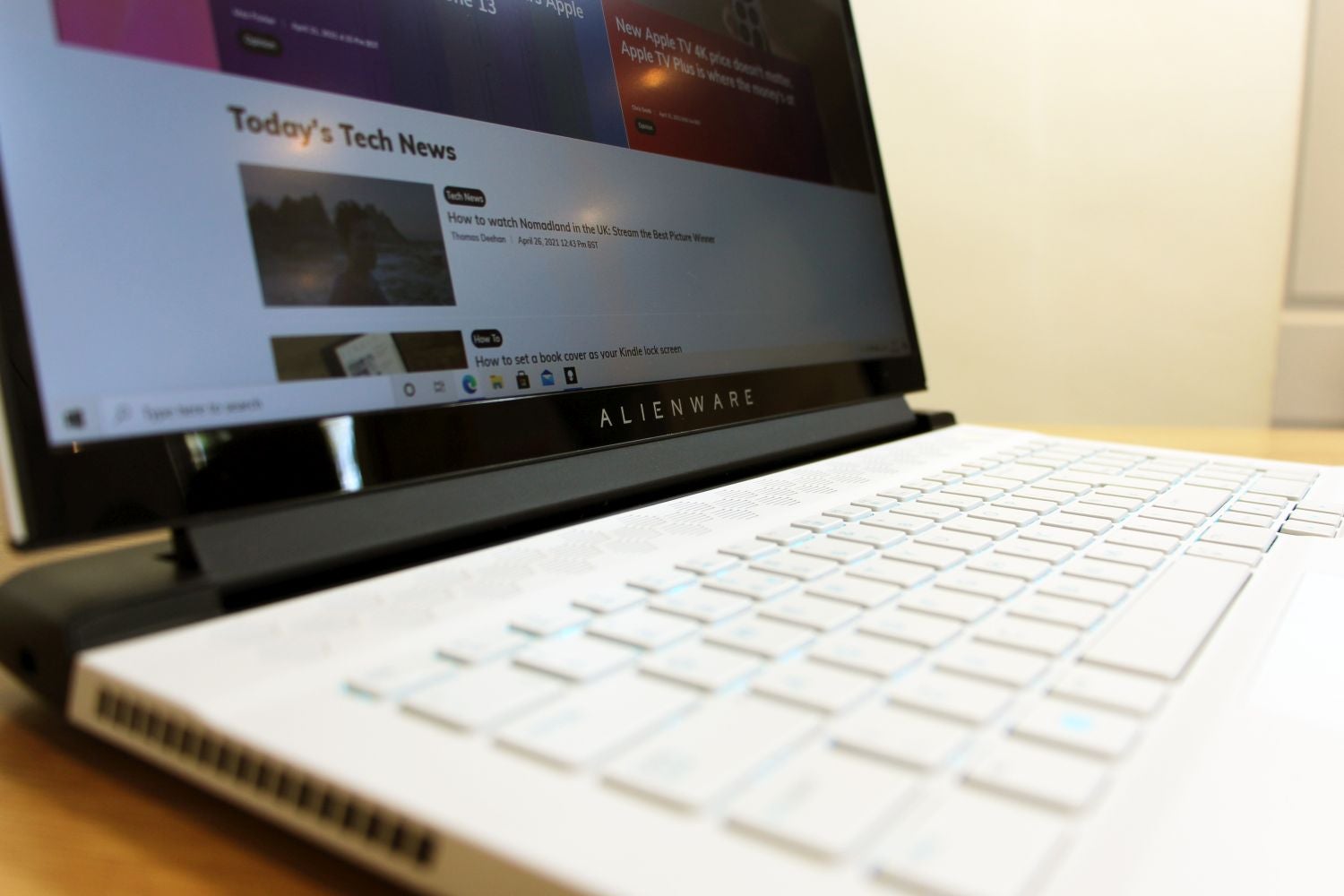
This machine weighs in at 2.97kg and it’s 22mm thick. That isn’t terrible, but the Alienware’s biggest rival – the Razer Blade Pro 17 – comes in at 2.75kg and 19.9mm thick. They’re slim margins, but the smaller Razer also looks far more subtle, so it’s altogether more discreet and mature than the Alienware.
Alienware’s machine serves up three USB 3.2 Gen 1 ports and a Thunderbolt/USB-C connection, a microSD card slot and mini-DisplayPort. The only external connectivity upgrade comes from HDMI 2.1, which enables 8K output. On the inside, Alienware upgrades to 2.5Gbps Ethernet and includes dual-band Wi-Fi 6.
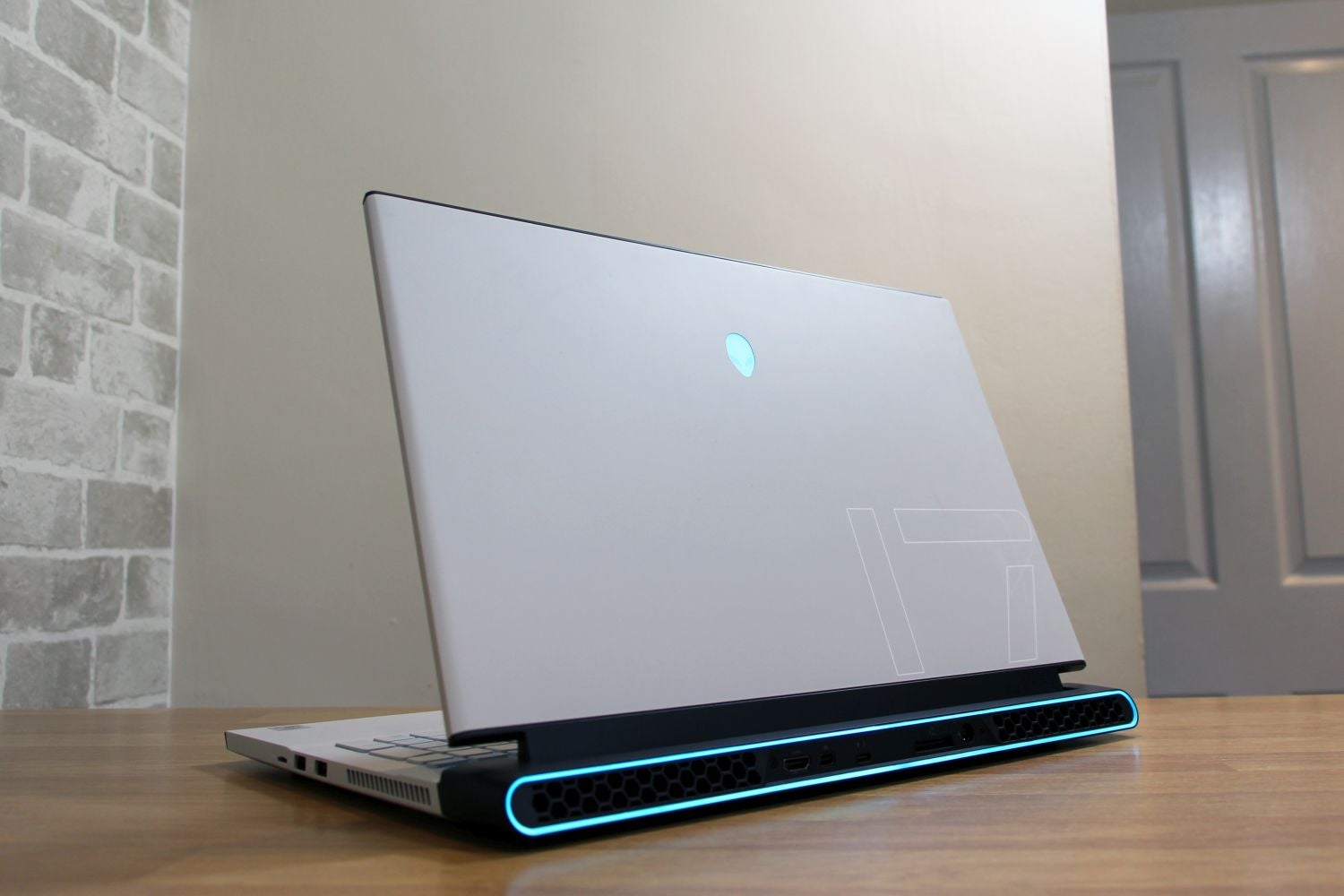
It’s decent connectivity, but Razer is better: the Blade has HDMI 2.1, faster USB 3.2 Gen 2, an extra Type-C connector and a full-size SD slot alongside the same internal connectivity.
The keyboard here offers 1.7mm of travel, n-key rollover, a numberpad and macro keys, and the buttons are fast and solid. It’s excellent for gaming and better than the shallower Razer unit. Bear in mind that UK and European users get per-key RGB LED backlighting, but US buyers must pay $30 extra.
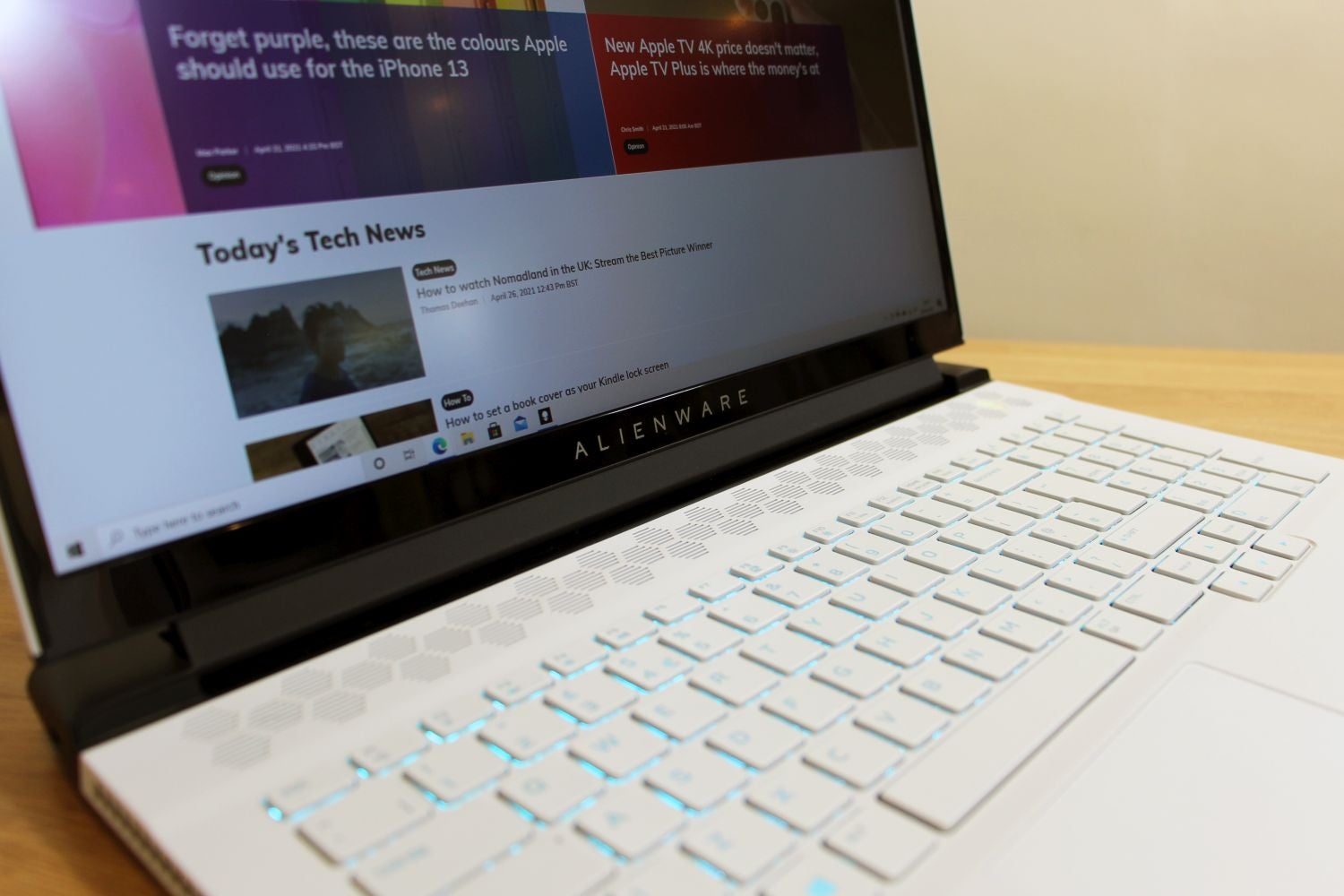
Alienware goes further in its offering this year, too: by spending £100 or $150 more in the UK or US, users can upgrade to CherryMX Ultra Low switches, which are Alienware-exclusive low-profile mechanical keys. They’ll be far more satisfying than the default option.
The trackpad is large and offers decent buttons, but it’s only acceptable for mainstream gaming. Anyone serious about getting the most out of this machine will likely attach a USB mouse.
Screen
- 360Hz refresh rate with Nvidia G-Sync enables butter-smooth gaming
- Superb quality levels create a punchy and accurate display
- The speakers are acceptable, but not outstanding
Last year’s 300Hz, 1080p display has been upgraded to a 360Hz model, with the Alienware also offering Nvidia G-Sync. It’s a relatively minor upgrade, but it’s still a fantastic specification. The synchronised refresh rate enables top-level eSports competition, and the display delivers crisp, smooth gameplay in single-player titles.
This display is brilliant for gaming, and better than the Razer; the Blade doesn’t offer G-Sync. For certain work tasks, though, you’ll have to pay extra for the 4K Adobe RGB panel. The Razer has the same distinction and extra costs.
The maximum brightness of 320 nits is good enough to handle any indoor situation, and the black point of 0.23 is low. The resulting contrast ratio of 1391:1 enables solid punch and vibrancy without oversaturation, and the black point means you get decent depth and nuance in darker areas.
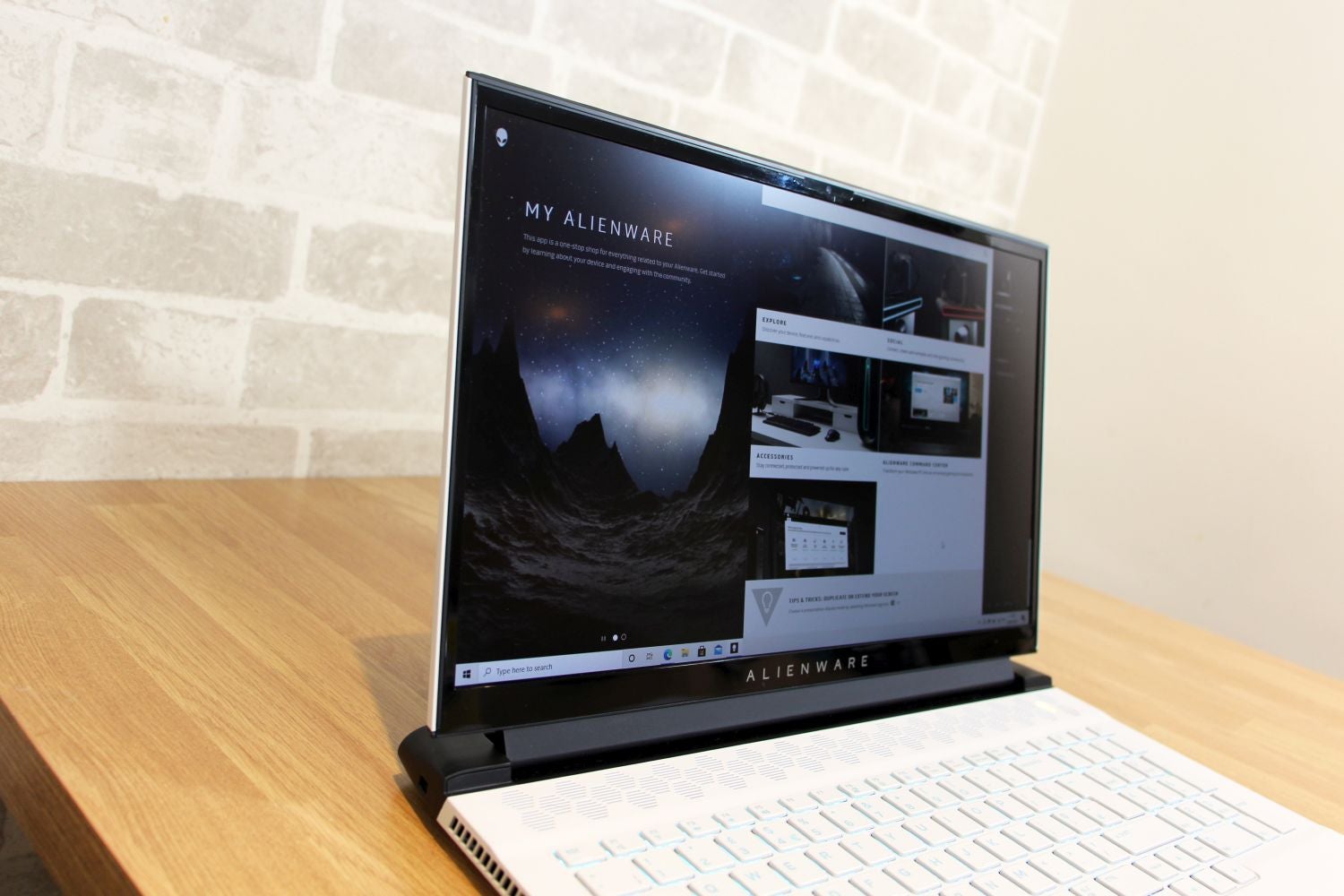
The Delta E of 1.28 and colour temperature of 6445K ensure accurate colours. Alienware’s display handles 97.8% of the sRGB colour gamut, so it produces almost every shade that mainstream games need. It bodes well for mainstream workloads, too, although bear in mind that the Alienware can’t handle the Adobe RGB gamut.
The Alienware’s speakers aren’t as impressive; audio is surprisingly tinny and it lacks bass. They’re acceptable for casual gaming, but a headset will be far better.
Performance
- The RTX 3080 delivers top-tier gaming performance
- The processor is very good, but AMD’s high-end chips are better
- The Alienware is a surprisingly adept thermal performer
This Alienware uses the Nvidia RTX 3080 laptop GPU. Processing power comes from Intel’s eight-core i9-10980HK, and the Alienware has 32GB of memory and a 1TB RAID array built from two SSDs.
An equivalent Razer Blade 17 Pro uses many of the same components, but it has a weaker Core i7-10875H processor. To get that spec, it will cost you £2949 / $3199 / €3299 – so Razer is cheaper in the UK and Europe, but pricier in the US.
| Alienware m17 R4 | Gigabyte AORUS 17G | Asus ROG Zephyrus Duo 15 SE | |
| Processor | Intel Core i9-10980HK | Intel Core i7-10870H | Ryzen 9 5900HX |
| PcMark 10 | 6235 | 6075 | 6755 |
| Geekbench 5 (single core) | 1227 | 1227 | 1461 |
| Geekbench 5 (multi core) | 7780 | 7532 | 8629 |
| GPU | Nvidia RTX 3080 | Nvidia RTX 3070 | Nvidia RTX 3080 |
| 3DMark Time Spy | 12,085 | 8977 | 10,356 |
This high-end m17 delivers formidable gaming power. It scored 153fps in Dirt Rally, and then ran through Horizon Zero Dawn and Borderlands 3 at 99fps and 91fps. The Alienware runs eSports titles at the frame rates required by the 360Hz panel, and it plays more demanding single-player games at a smooth 60fps or beyond, always ensuring a superb experience.
The RTX 3080 includes support for ray tracing and DLSS, and it can output to 4K displays, albeit with reduced graphics settings in the toughest games. It supports VR headsets and widescreens, too, and is very future-proofed.
The Intel Core i9-10980HK processor is good, but it isn’t necessarily the best option, with the AMD’s Ryzen 9 5900HX chip seeing better benchmark results across the board.
Intel’s CPU results are never problematic – this Core i9 CPU is fast, and it’s quicker than the Core i7 chips inside the Razer. It’s also bolstered by an SSD with decent read and write speeds of 3272MB/s and 2348MB/s. But if you want a laptop for challenging workloads, AMD’s mobile CPUs are quicker.
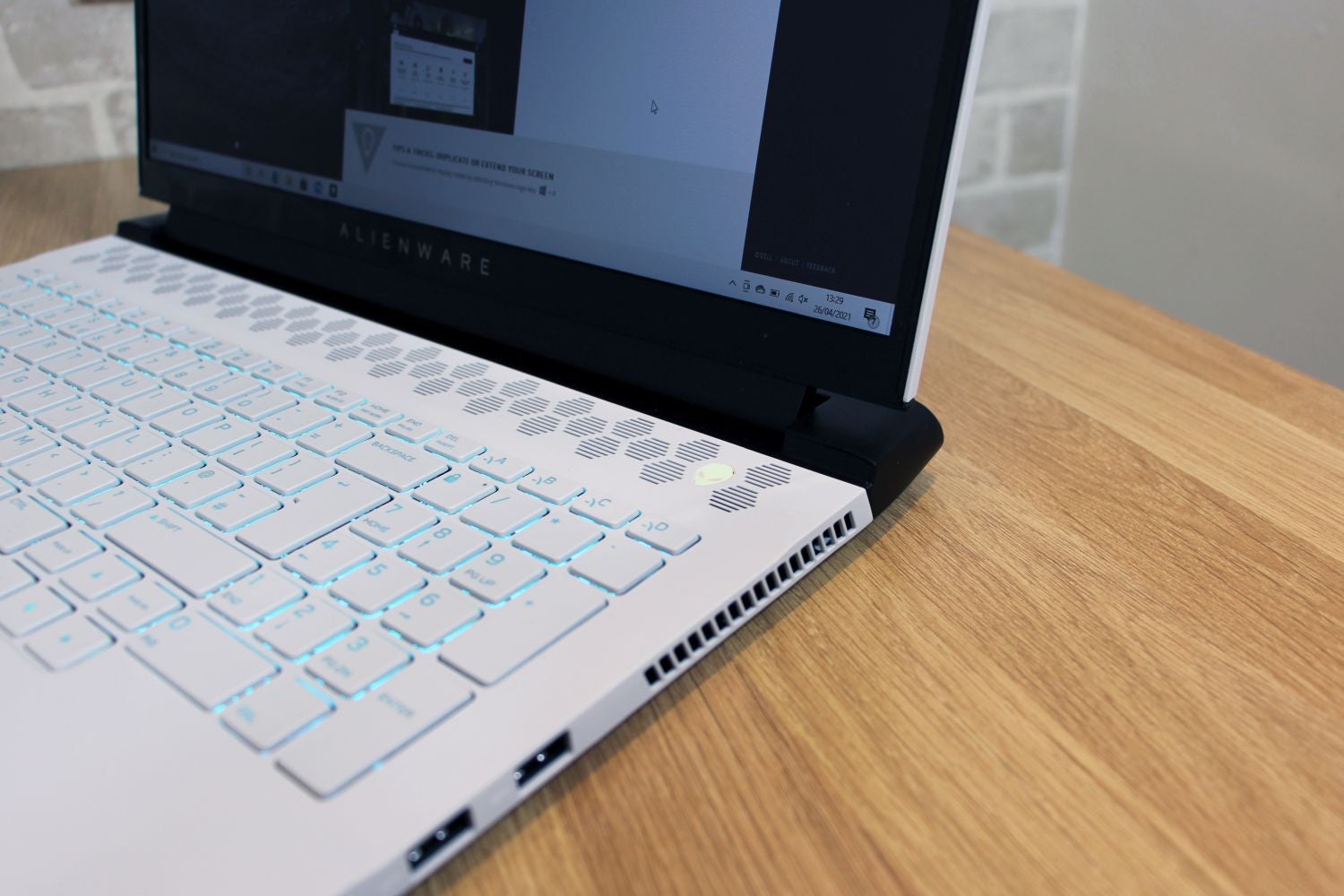
Noise levels here were never worse than other high-end laptops – plus the speakers (or a headset) will easily drown out the fans. Internal temperatures were fine, too: there’s a little CPU throttling and some of the external panels became a little warm, but this is typical behaviour from any high-end laptop.
Alienware’s machine does have overclocked modes. They deliver a few extra frames in games and a little more CPU performance – but they dramatically increase fan noise, so only headset users need apply.
Battery
- You’ll only get an hour out of this machine for gaming
- Expect no more than two hours when working
- To get the most out of the Alienware, stayed plugged in
It’s no surprise that the heavyweight Alienware doesn’t offer great longevity when it comes to battery life. It lasted for 1hr 5mins when gaming, and just over 1hr 30mins when running a work benchmark. In the video playback test, it ran out of juice after 1hr 53mins.
That’s a poorer result than Razer’s laptop, but the Blade 17 Pro doesn’t last long away from power either.
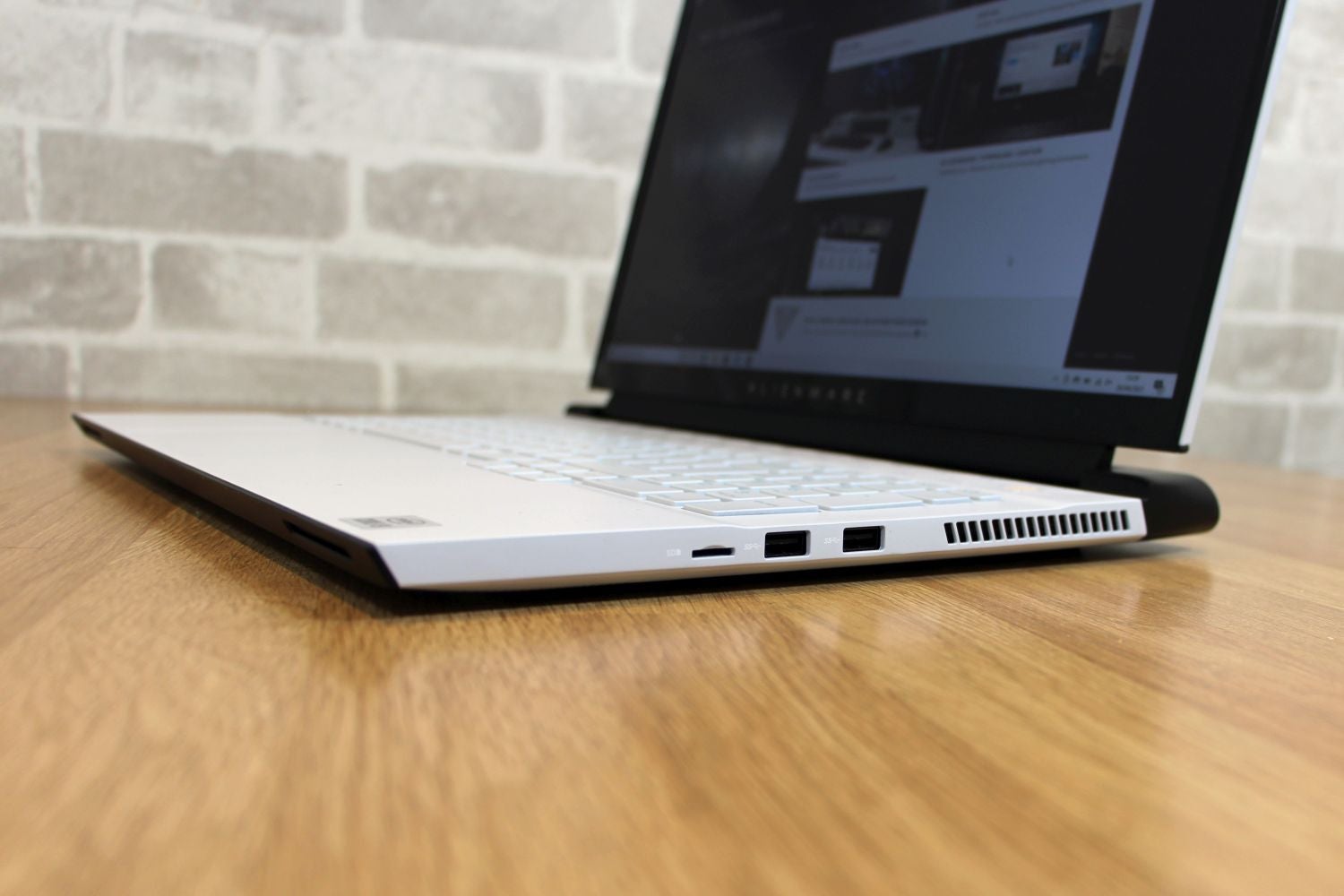
The Alienware combines the poor battery life with reduced performance when running on battery power, so it doesn’t work as intended away from the mains. You’ll have to plug in to get the most out of this machine.
Conclusion
There’s plenty to like about the Alienware m17 R4. The RTX 3080 serves up huge gaming ability, the 360Hz screen is fantastic, and the rest of the components are impressive. The keyboard is great, the design is bold, and connectivity options are broad.
There are issues, however. Battery life is poor, the Alienware is bigger than rival machines, and AMD’s processors outpace the Intel chip used here. Surprisingly, this laptop also comes with mediocre speakers. Razer’s machine is slimmer and more subtle, but it has a poorer CPU and keyboard.
However, the Alienware’s problems aren’t surprising, and neither are they deal-breakers in a gaming laptop, which leaves the Alienware in a strong position. If you want huge GPU power, bold design and a fantastic screen, the Alienware m17 R4 ticks the boxes.
Latest Deals
Should you buy it?
You want incredible gaming power
The Alienware m17 R4 will make all of today’s top games look incredible, and it will handle them for years to come too.
You’d prefer a productivity laptop
The Intel CPU inside the Alienware is a good chip, but AMD’s high-end Ryzen parts are significantly faster for productivity apps.
Final Verdict
The Alienware m17 R4 offers brilliant gaming power, a great screen, impressive connectivity and a top-notch keyboard – but it isn’t perfect. The CPU is beaten by rivals, this machine is heavy, and battery life is poor. It’s an excellent big gaming laptop – but it isn’t infallible, and neither is it cheap.
FAQs
The m17’s power brick weighs 1.35kg and it’s 200mm long and 100mm wide, so it’s going to add significant weight to your backpack.
The base is easy to remove and you can access the m17’s two M.2 connectors, but the memory is soldered to the motherboard and not replaceable – a disappointing design decisions.
By default, the Alienware comes with a year of premium support and onsite service, and three- and four-year upgrade options are available alongside accidental damage cover.
Benchmark results
We’ve also included comparison benchmark data below to help your buying decision. We’ve included the results from the Asus ROG Zephyrus Duo 15 SE because it’s one of the most powerful gaming laptops currently around, and also added the HP Omen 15 (2020) as it’s one of our favourite laptops right now.


